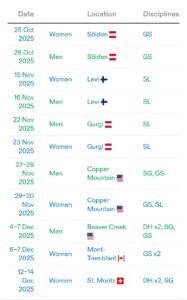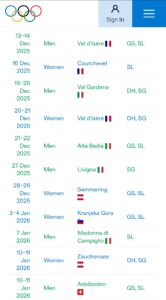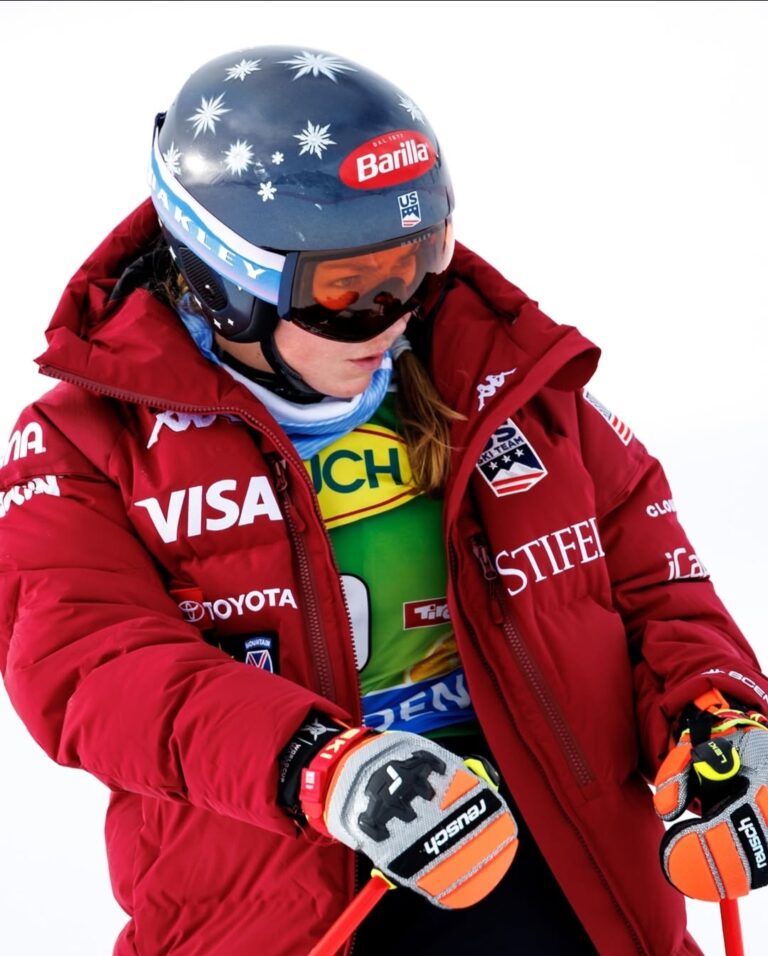Mikaela Shiffrin, the two-time Olympic champion and alpine skiing’s most decorated athlete, kicked off the 2025/26 FIS Alpine Ski World Cup season with a promising fourth-place finish in Saturday’s giant slalom opener in Sölden, Austria – a result she described as a “monumental step” in her ongoing recovery from last season’s challenges. Building on that momentum, Shiffrin has revealed a provisional schedule emphasizing her strongest disciplines – slalom and giant slalom – as she builds toward the Milano Cortina 2026 Winter Olympics, set for February 6-22 in Italy.

In a recent interview ahead of the Sölden race, Shiffrin outlined a measured approach to the Olympic campaign, prioritizing consistency over chasing an unprecedented sixth overall World Cup title. “I’m not feeling like I’m at the top yet, but I’m excited about the process,” she told the Vail Daily, reflecting on her summer training camps that targeted giant slalom improvements following a traumatic crash last season that left her grappling with PTSD-like symptoms. Her plan calls for selective participation in up to 16 technical events before the Games, with a potential dip into super-G to test the waters, all while fostering the confidence needed for what she hopes will be a redemptive Olympic performance after a medal-less Beijing 2022.
Shiffrin’s early-season itinerary aligns closely with the women’s World Cup calendar, starting strong on familiar terrain. After her Sölden result – where American teammate Paula Moltzan stunned the field with second place behind Austria’s Julia Scheib – Shiffrin heads to Levi, Finland, for a slalom on November 15. She’ll follow that with another slalom in Obergurgl, Austria, on November 23, before returning stateside for the inaugural Stifel Copper Cup at Copper Mountain, Colorado, featuring giant slalom on November 29 and slalom the next day. “Competing on home snow is always special, especially after missing Beaver Creek last year,” Shiffrin noted, expressing enthusiasm for the North American swing.
December brings back-to-back giant slaloms at Mont-Tremblant, Canada, on the 6th and 7th – an unusual doubleheader that offers prime opportunities for technical refinement. Shiffrin plans to venture into speed events with a super-G in St. Moritz, Switzerland, on December 14, but only as a one-off evaluation. “I adore super-G, but if it doesn’t click for Olympic qualification, I’ll narrow back to slalom and GS,” she said, acknowledging the depth of the U.S. squad in downhill and super-G.
The pre-Olympic buildup intensifies in January, with technical races in Kranjska Gora, Slovenia (giant slalom January 3, slalom January 4); a slalom night race in Flachau, Austria, on January 13; and a giant slalom in Kronplatz, Italy, on January 20. The calendar’s final tune-up arrives in Špindlerův Mlýn, Czechia, with giant slalom on January 24 and slalom on January 25 – events Shiffrin views as crucial for peaking at the right moment. “These races will be our last chance to dial in before Milano Cortina,” she added.
At the Olympics, Shiffrin is targeting three events: slalom, giant slalom, and the team combined, with the alpine competitions unfolding in Cortina d’Ampezzo – a venue she calls “one of my best places to ski.” Post-Games, her schedule lightens for a strong finish, including technical races in Åre, Sweden (giant slalom March 14, slalom March 15), before wrapping up at the World Cup Finals in Lillehammer, Norway, from March 21-25.
Shiffrin’s strategy reflects a mature evolution from her early-career dominance, now tempered by experience and a desire to “make peace” with the Olympic spotlight. With eight world championship golds and 97 World Cup victories already in her trophy case, the 30-year-old American enters the season not as the unbeatable force of old, but as a resilient competitor hungry for unfinished business in Italy. As she put it: “Consistent World Cup results will give me the best shot at the Games – it’s about building, not peaking too soon.
